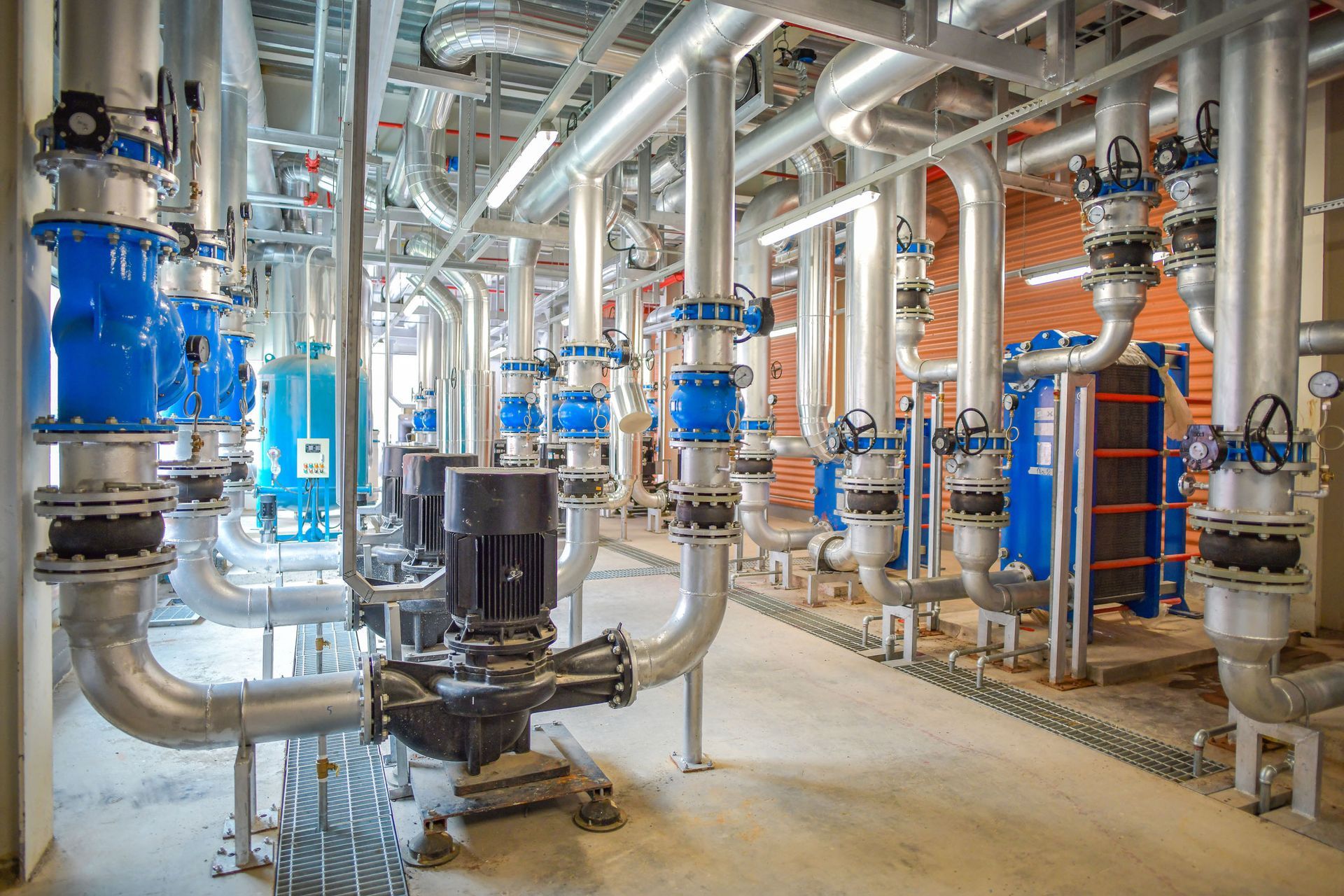Head Office
Sales Contact Ian Pearce
Tech Support Contact Ian Ware
INTRODUCTION TO ULTRASOUND
Enhanced Technology Reliability and Efficiency
Ultrasound is an ideal technology to improve equipment reliability and reduce energy costs. These instruments can be used to detect airborne and Structure-borne emissions identifying various potential problems and often used with other PDM technologies such as vibration and infrared. Usually portable, these instruments detect leaks in pressurised gas and compressed air systems, vacuum systems, valves, and steam traps. Additional applications include inspection of high voltage apparatus for corona, arcing and tracking. They are also used for trending bearings and detecting conditions such as lack of lubrication and rubbing. A brief overview of the technology, its applications, and suggested inspection techniques are explained below.

Slide title
Write your caption hereButton
In companies worldwide, there has been a compelling need to improve equipment and plant reliability and reduce costs. Implementing programs using condition monitoring technologies is an integral part of this process. Using these condition-monitoring technologies has improved production, reduced maintenance costs, reduced energy consumption, enhanced efficient use of personnel and increased profitability.
One reason for the improvements in equipment and plant reliability has been the development and advancements in many condition monitoring and PDM technologies. Airborne/Structure Borne Ultrasound. Instruments based on this technology can monitor a wide range of plant operations and are simple enough to be used with minimal training for basic, effective inspection routines. Ultrasound has become an integral part of an overall Reliability program in companies around the globe.
Lightweight and portable, ultrasound instruments may be used to inspect potential problems in practically every type of equipment and system in a plant.
SOME TYPICAL APPLICATIONS INCLUDE
The Effectiveness of Airborne/Structure-Borne Ultrasound Technology

Slide title
Write your caption hereButton
Leak detection in pressure and vacuum systems, compressed air audits, leak detection on specialty gas systems, bearing inspection, testing gears/gearboxes, pumps, motors, steam trap inspection, valve testing, detection of cavitation in pumps, and testing for arcing, tracking, and corona in electrical apparatus.
What makes airborne/structure-borne ultrasound so effective? All operating equipment and most leakage problems produce a broad range of sound. These sounds' high-frequency ultrasonic components are extremely short waves in nature. A short-wave signal tends to be directional. It is, therefore, easy to isolate these signals from background plant and operating equipment noises and to detect their exact location. In addition, as subtle changes begin to occur in mechanical equipment, ultrasound allows these potential warning signals to be detected early before actual failure.
Ultrasonic Instruments, often called "ultrasonic translators, " provide information in two ways: qualitative through the ability to "hear" ultrasounds through a noise-isolating headphone and quantitative via incremental readings on a meter or display panel.
Although the ability to gauge intensity and view sonic patterns is essential, it is equally important to "hear" the ultrasounds produced by operating equipment. That is precisely what makes these instruments so effective. Ultrasonic Instruments allow inspectors to confirm a diagnosis on the spot by clearly discriminating among various equipment sounds. This is accomplished in most ultrasonic translators by an electronic process called "heterodyning" that accurately converts the ultrasounds sensed by the instrument into the audible range where users can hear and recognise them through headphones and, in some devices, record the sounds for further analysis and documentation.
The high frequency, short wave characteristic of ultrasound and the ability of these instruments to sense that sound enables users to accurately pinpoint the location of a leak or of a particular mechanical anomaly.
Most of the sounds sensed by humans' range between 20 Hertz and 20 kilohertz (20 cycles per second to 20,000 cycles per second). The average human threshold is approximately 16.5 kHz. Low-frequency sounds in the human audible range are approximately 1.9 cm (3/4") up to 17 m (56') in length. The high-frequency sounds sensed by ultrasonic translators are only 0.3 cm (1/8") up to 1.6 cm (5/8") long.

Slide title
Write your caption hereButton
Ultrasound wavelengths are, therefore, magnitudes more minor than those of low frequency, which makes the "ultrasonic environment" much more conducive to locating and isolating the source of problems in loud plant environments.
The primary advantages of ultrasound and ultrasonic instruments are:
1. They are directional, and problems can be easily located
2. They provide early warning of impending mechanical failure
3. Instruments can be used in loud, noisy environments
4. They support and enhance other PDM technologies or can stand independently in a condition monitoring or energy conservation program.
APPLICATIONS
Exploring Versatile Applications of Ultrasonic Translator
Generically, applications for ultrasonic translators fall under three basic categories: mechanical inspection, leak detection and electrical inspection.
MECHANICAL INSPECTION
Mechanical equipment produces a "normal" sound signature while operating effectively. As components begin to fail, a change in the original sonic signature occurs. This change can be noted on a meter/display panel or can be recorded if the detector can do so. The sound quality will be heard through headphones.
The key to mechanical inspection relies on a consistency factor. Variables should be kept to a minimum. A test point should be established to accomplish this, whether troubleshooting or trending equipment. This test point can then be used for comparison with other test points on similar equipment or compared with itself over time.
As an example, for bearing inspection, to determine whether a bearing is in a suitable or failed mode, touch the bearing housing using the contact probe or a magnetic transducer, at one point, usually near the grease fitting, and adjust the sensitivity to get a specific meter reading (digital instruments will display the dB level). Compare this reading at the same sensitivity setting on a similar reference point on a bearing operating under the same conditions. The meter (dB) reading and the sound quality should be similar. This same reading can then be used to trend each bearing over time to determine the lack of lubrication or failure mode.
Ultrasound detectors work well on slow-speed bearings. In some extreme cases, just hearing some movement of a bearing through a well-greased casing could provide information about potential failure. The sound might not have enough energy to stimulate classic vibration accelerometers but will be heard via ultrasonic translators, especially those with frequency tuning.
ELECTRICAL INSPECTION
Electrical problems are also detected with ultrasonic translators. When arcing, tracking or corona discharges occur, they ionise air molecules producing ultrasound. Loose connections can be identified. Buss bars, switchgear, junction boxes, etc., can be listened to for the high-frequency sounds of an electrical emission. This is usually heard as a buzzing or frying sound in the headphones.
Another area of inspection for ultrasonic detectors is switchgear and overhead high voltage lines for the location of corona or tracking problems. Although infrared has often been used to locate electrical problems, it has been found that these instruments are often "blind" to corona and tracking in high voltage systems (13 kV and up). Ultrasonic detectors "hear" the sound of corona and enable users to locate them quite quickly. For this reason, many inspectors now use ultrasonic translators to support their infrared electrical monitoring programs.
Those inspectors that use both technologies often prefer to screen enclosed equipment such as switchgear with ultrasound instruments to detect the possibility of the corona, arcing or tracking by scanning around door seals and air vents before the cabinets are opened to perform an infrared inspection. Following this procedure dramatically reduces the possibility of an inspector being involved in an arc flash incident.
LEAK DETECTION
Leakage can occur in liquid or gas systems. The most significant advantage of ultrasonic detection is that it can be used in various leak situations since it is sound-sensitive and not "gas" specific.
The reason ultrasound is so versatile is that it detects the sound of a leak. When a fluid (liquid or gas) leaks, it moves from the high-pressure side of a leak through the leak site to the low-pressure side, expanding rapidly and producing a turbulent flow. This turbulence has ultrasonic solid components. The intensity of the ultrasonic signal falls off rapidly from the source. For this reason, the exact spot of a leak can be located.
The method of generalised gas leak detection is relatively easy. One scans an area, listening for a distinct rushing sound. The leak area is scanned with continued sensitivity adjustments until the loudest point is heard.
Some instruments include a rubber-focusing probe that narrows the reception area to pinpoint a small emission. The rubber-focusing probe is also an excellent tool for confirming the location of a leak by pressing it against the surface of the suspected area to determine if the sound of the leak remains consistent. If it decreases in volume, the leak is elsewhere.
Using digital ultrasonic detectors, leaks are measured in dBs, then downloaded into available software that allows the user to assign a cost value to the leak as well as the potential reduction in greenhouse gas emissions when the leak is repaired. This information can be displayed in simple, custom-designed, excel spreadsheet-based reports.
Vacuum leaks may be in the same manner. The only difference is that the turbulence will occur within the vacuum chamber. For this reason, the intensity of the sound will be less than that of a pressurised leak.
VALVES
Valves are usually checked for leakage with the contact probe. The downstream side is used to determine leakage. This is accomplished by touching two points on the upstream side and noting the intensity of both readings. The next step is to connect two points on the downstream side. The valve is considered closed if downstream levels are lower than the upstream levels. If they are higher than upstream and are accompanied by a typical rushing sound, the valve is most likely leaking. If the second downstream point is louder than the first, this may indicate that the sound source may not be coming from the valve. The sound may be generated from a downstream source not associated with the valve.
STEAM TRAPS
Steam traps are also inspected easily with ultrasonic translators. It is essential to determine precisely how a particular trap is supposed to operate. This can be accomplished by consulting with steam trap suppliers and using other resources such as the Internet. When the trap's operation is known, it is tested by touching near the discharge orifice of the trap and both listening and noting the intensity level. If a sound is heard that is consistent with the correct operation of the trap, the trap is working correctly. The trap will likely fail if a load hissing or rushing noise is continuously heard.
CONCLUSION
Ultrasonic Instruments are an important part of any reliability-based condition monitoring programs and an essential tool for energy conservation programs. Their versatility, ease of use and portability enable inspectors to plan and implement inspection procedures effectively. By locating leaks, detecting high voltage electrical emissions, and sensing early warning of mechanical failure, these instruments contribute to cost reduction, improved system efficiencies and reduced downtime, increasing a plant's overall reliability.
Explore the diverse applications of airborne ultrasound and optimise your plant's performance today.
QUICK LINKS
Contact Information
Sales Contact Ian Pearce: 0448 901 774
Tech Support Contact Ian Ware: 0400 709 800
Email:
support@ultra-tek.com.au
Head Office: Unit 5 2 Maiella Street Stapylton, QLD 4207
Business Hours
- Mon - Thu
- -
- Friday
- -
- Sat - Sun
- Closed
